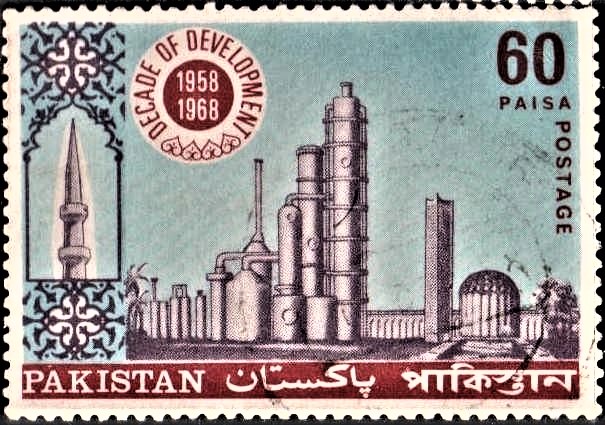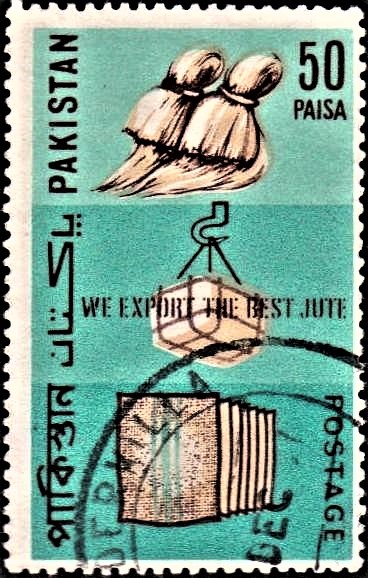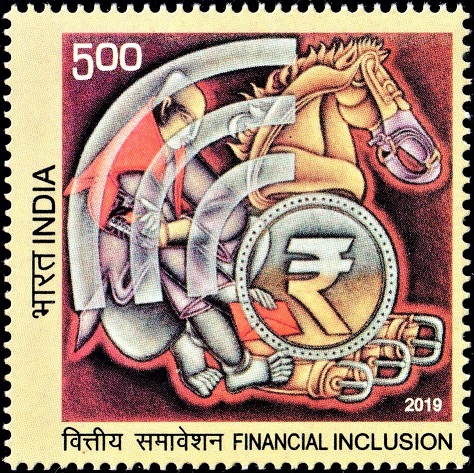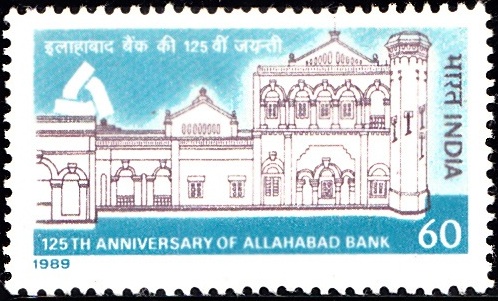
Pakistan on Habib Bank Limited 1966
A commemorative postage stamp on the Silver Jubilee of HBL Pakistan (1941–1966) :
 Issued by Pakistan
Issued by Pakistan
Issued on Aug 25, 1966
Issued for : To commemorate the Silver Jubilee of Habib Bank of Pakistan, the Pakistan Post Office is issuing a postage stamp of 15 Paisa denomination on August 25, 1966. With the issue of this stamp, national progress in the private sector would, for the first time, be highlighted.
Design : The crest of Habib Bank is the main feature of the design which appears on the right hand side in green colour against a white halo in the orange background. On the left side appear the words “25 years of Service”. The words “Silver Jubilee Habib Bank” and “Pakistan Postage” are shown in reverse in the frame at top and bottom respectively. The word “Pakistan” in Urdu and Bengali in reverse appears on the left and right respectively in the frame. The denomination appears in English at top right corner.
Type : Stamp, Postal Used
Denomination : 15 Paisa
Colours : Deep Brown, Orange & Green
Size of Stamp : 36 x 26 mm
Size of Print : 33 x 23 mm
Perforation Gauge : 12½ x 14 (c)
Quantity Printed : 15,00,000
Number of stamps in each sheet : 50
Process of printing : 2 colour Litho Offset One colour D.P.
Printers : The Pakistan Security Printing Corporation Ltd., Karachi
Name : Shah Abdul Latif Bhittai
Born on Nov 18, 1689 at Hala, Sindh, Pakistan
Died on Jan 1, 1752 at Bhit, Pakistan
About :
- The story of Habib Bank is inter-linked with the economic development of the nation and the country. It is a story of a leading banking institution which was established in the Indo-Pak Sub-Continent in 1941, just after one year of passing of the Pakistan Resolution. The Bank had full faith in the creation of the new Muslim State and in taking care of the banking requirements of the country. Its aim was to spread the banking facilities so as to make the nation savings and bank-minded. In order to achieve this objective, a large number of branches were opened in pre-Independence India. A special scheme was introduced to attract young Muslim graduates to the field of banking. They were trained so that one day they could take over the banking industry of Pakistan. In 1946, the leaders of the Pakistan Movement in undivided India, and the Quaid–i–Azam in particular, recognised the services being rendered by the bank and patronised it. The Bank was entrusted with the accounts of Bihar Relief Fund started by the Quaid–i–Azam. It was also appointed bankers to the Muslim League Pakistan Fund which became known as the Silvery Bullet Fund and various other funds with which the Quaid–i–Azam was associated.
- Just before the establishment of Pakistan, Habib Bank transferred its Head Office to Karachi to face the challenging times and to assist the country and its people economically to stand on their own. Its branches in India were geared up to go all out in extending their assistance for transferring money to Pakistan for the people who were migrating to the new country in large number. After the establishment of Pakistan, the bank placed all its resources at the disposal of Government and subscribed heavily to the Government Securities.
- In view of the migration of Hindu businessmen, the export of cotton got a great setback. To overcome the difficulties arising out of this situation, a Corporation was floated with the participation of Habib Bank to take care of the problem. This step was very necessary to boost up the exchange earnings from export of cotton which were so necessary for the economic uplift of the country.
- Then came the closure of Indian Banks’ branches in Pakistan which were reduced from 631 to 213 and in West Pakistan alone from 481 to 69 only. The Bank, therefore, went all out to open its branches throughout the country and its earlier policy to train Muslims in the banking field really paid rich dividends. In fact, the trained officers of this Bank became the backbone of the Banking industry in Pakistan, as many of them were drafted to other banking institutions.
- Mass contact was later arranged with the masses to make them bank-minded and for this purpose, the banking facilities were rapidly expanded by providing 450 branches. New techniques were introduced at the same time to popularise banking and extend better service. Electronic Book-Keeping, Inland and International Teleprinter Service, Drive-in-Banking, Evening Banking Service, Rupee Travellers Cheques, School Banking, Computer Service etc., are some of such services which were introduced by Habib Bank for the first time in the country.
- Although the Bank had over 1,100 overseas correspondents, yet, to further develop the country’s export potential, the Bank decided to have its own branches overseas. In 1952, therefore, another institution by the name of Habib Bank (Overseas) Ltd. was sponsored which has now nine branches at Aden, Beirut, Birmingham, Bradford, Colombo, London, Mombasa, Port Louis and Sharjah. These branches are apart from Habib Bank’s own foreign branches in Bombay and Kuala Lumpur.
- No account of a banking institution can be complete without a mention of its Capital structure. Habib Bank now has the largest Paid-up Capital and Reserves for any Pakistani Bank, namely, Rs. 8 crores and 10 lacs. Its Authorised Capital is Rs. 10 crores while the total deposits as on December 31, 1965, exceeded Rs. 197 crores. It is easily the most progressive bank in Asia and the fourth most progressive bank in the world.
- With the compliments of The Director-General, Pakistan Post Office, Karachi.







